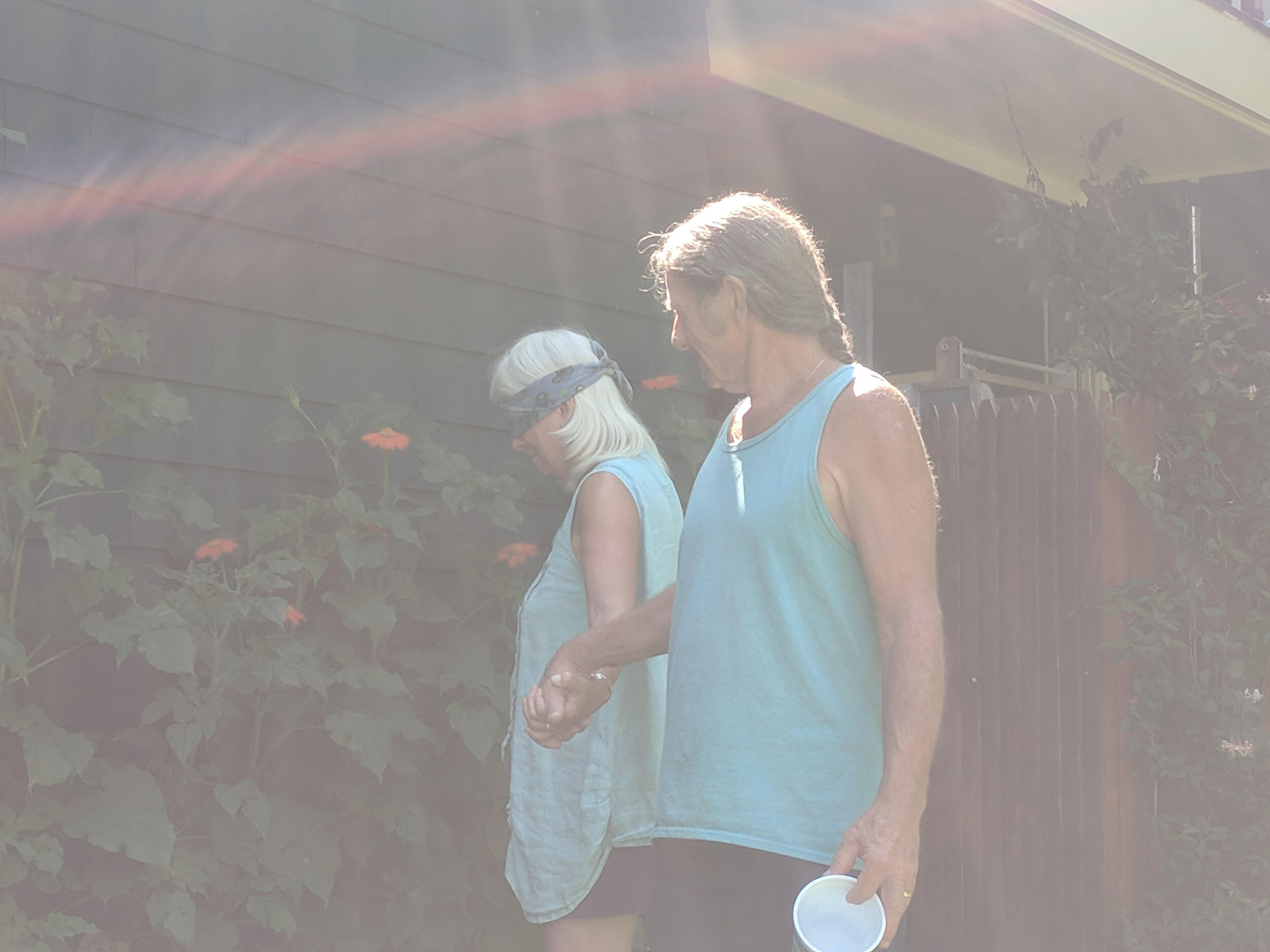Being Grounded by Mark Carlin
Praising the very things and forces that are dear and life-giving to us metabolizes the grief of what's been lost--what's been culturally denigrated, collectively discarded and thrown into the trash heap-- into something beautiful and worthwhile. The earth forever calls us home, and the "ground" of any true culture lies in the soil. It's that in-between common world of civilization and wild nature, that place where relationship is formed. It's where our human hands and feet marry mineral and plant, there in the world of microbes and insects, sun and rain. It's where our love gets planted, where our plants get loved, where all true nourishment derives from, and where in sacred bonding and dedication we can do something in return to feed this earth, this flowering world.
Connection with Earth and Soil
In terms of plants grown on the farm or at home in our small gardens, the health and vitality of the soil is something we can directly participate in and thereby influence for the better. Being aware that what goes into the soil determines what comes out, let's explore some methods and attitudes regarding what we mean when we consider "being grounded".
Many of us have had epiphanies while engaged in gardening and working with trees and plants, with the cycles of the changing seasons, with successes and failures in our growing endeavors. Here is one of my “ah-now I see” moments:
I was late in life when the time and place and opportunity arrived where real relationship with the land and the ground began. I was fortunate in my early 50's to meet a woman "of the land" who held out her hand and invited me "home". Pam said at the time that it would certainly take me a few years to get my feet on the ground here at Sweetwater Sanctuary. My first epiphany came as I began going shoe-less in the gardens. I had been a Redwing-boot-working-man for decades, and as I began gradually removing those leathered barriers between me and the Earth--well it was like a great weight, a great veil got lifted. I began to actually feel the Earth again, its textures, its temperatures, and I began having a profound realization that the world of ladybugs in the spring and fireflies in the heat of summer nights and garter snakes in the cool morning grasses were relatives and environments that I had been so far away from--ever since being a little kid it seemed. I felt moved to the core at how completely I had assumed that the natural world would never again appear that way. I began getting grounded, working in gardens and with the soil. Some old memories returned from somewhere out of the ground, through my feet, and into my heart, and I grieved, remembering some of the language in the air at my all-boys ROTC Catholic high school in the 1960s. A couple of the highest put-downs thrown back then in that environment were calling someone a "fem" and a "farmer"” Now, through working with the soil, I was finding ways of metabolizing that old grief.
The Transformative World of Composting
The world of composting is fascinating to me, physically and spiritually. It's an activity that was born out of necessity, not convenience and one that is very ancient and essential to "intact" peoples everywhere, to the point where the compost pile may be regarded as a temple where the "mouth" of this Divine World gets fed.
What first began as a place and a way to deal with our food and garden and human "waste"(there's no such thing as waste in nature) at Sweetwater Sanctuary has evolved into a labor of love because what is happening in a compost pile is so amazing and about so much more than what we "get" as a result. What it represents, what it holds, is diversity of matter-- working together, metabolizing, churning, eating and being eaten, decaying, and rebirthing. The soil form that it eventually takes contains a whole entire mix of lives once lived--not gone away or forgotten or denied, but returning again in new and regenerated forms that carry on the cycle of life.
In the physical form, our composting for soil contributions at Sweetwater Sanctuary involves a row of 4 bins, or chambers, made of wood, each about 4' square and high. I use two of them each season actively, then one for storage of cover material and the fourth for resting a completed pile. Starting from scratch with an empty bin in a new year, a foot or more of leaves, grass and hay forms the bed. Good worm-welcoming food scraps tucked initially under that is a nice invitation. Some shovel-fulls of older compost add a sense of continuity, a carrying over of losses and gains.
Earth worms, especially the red wigglers, are a composter’s great ally. Find some and add them. Once established they will multiply like crazy, and from there you can gather some of them from a previous year’s compost pile and inoculate a new pile. They will go deep down in the winter then rise back up during the following spring and summer. Food scraps, good paper and cardboard, weeds, grass clippings, old mulch, rain water, manure so rich in nitrogen and so necessary to act with all the fiber carbons to create balance and raise the temperatures for proper "cooking," all these and more continue going in. Cover material, again in the form of grass, hay or straw can be piled nearby and used between additions to keep flies and mischievous four-leggeds at bay, and to help keep in the heat that generates. Then the pile rests a year or more. This is an aerobic process that takes time, but does not call for turning over of the pile. Just let it be. I have found that larger dry plant stalks do not break down so well, though they do provide some pockets of space and perhaps help the pile breathe somewhat. Generally speaking, with sufficient heat production, seeds of plants will decompose. Due to their propensity to voraciously spread, we play it safe and avoid adding nettle and comfrey plant material, in the event their seeds and roots may survive enough to re-grow.
Feeding the Mouth of the Divine
In a greater dimension we see that composting is a spiritual and cultural practice because what goes in to the mix, what gets added to the cooking pot, are actually stories of the soil and the ground and all the living that was done in a time and a place. Perhaps a true compost chamber or hill contains much more than simply organic matter that will break down in time and provide great nutrition for the soil. Perhaps the mouth of the Divine needs to be fed stories and objects that we as people used along the way in our journeying Home--an old beaten down piece of shoe leather that helped us do the work that fed our children, a piece of writing from a dearly missed friend or family member who has passed on, a handmade bead from a shell of the ocean shore where little grand daughters live so far away but where we saw together the sweating sun drip his way down into the embrace of the cool Motherwaters, tissues containing the tears and snot of people feeling deep emotion and grieving the losses of what they've loved.
The Soil births all these stories, carries all these stories, and consumes all these stories. It feels vitally necessary to approach the Soil with as great a sense of offering as possible because it can grow hungry and tired with age and use. To labor in active composting is sort of like calling a family reunion together where eventually all the relatives get to see each other and be with each other again, all the veggies, all the fruits cakes, some are leaving while some are just arriving, but it's a good thing they all "cook" together and share common ground.
Here's to healthy soil!
Mark Carlin, along with Pam Montgomery, are the co-stewards of Sweetwater Sanctuary, which is home to Partner Earth Education Center and ONE.
This article was originally published by ONE on July 21, 2015.





